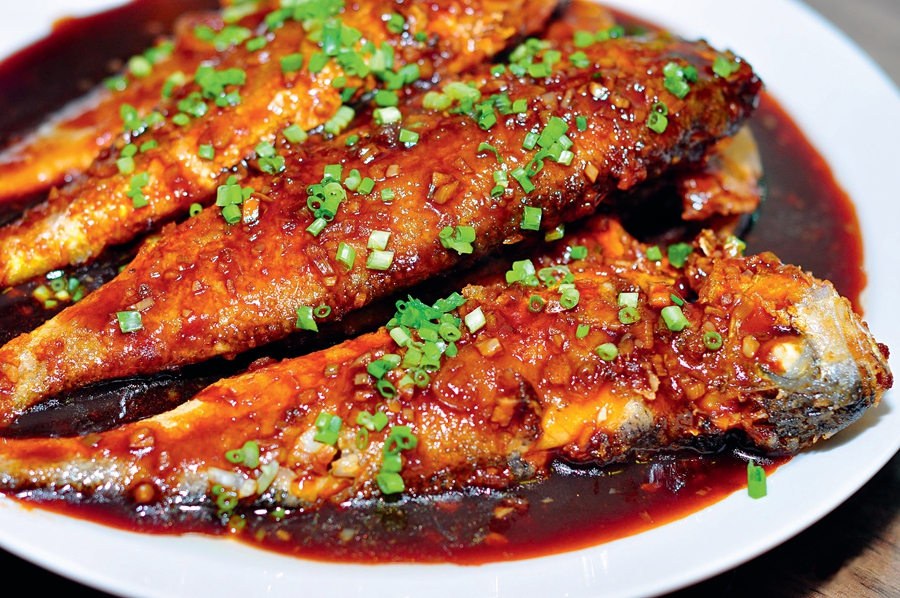Yellow Croaker Recipes
China Today,May 16, 2018 Adjust font size:
In Beijing, the water system doesn’t have the richness and variety found in the regions south of the Yangtze River, but there are still many rivers, lakes, and ponds. The evenly distributed freshwater throughout the city makes it convenient for residents to eat fish.
There are numerous Peking-style cooked fish, among which the top rated four are: the tile-shaped fish at Houdefu Restaurant, one fish cooked in four ways at Zhimeilou, fried fish with soy sauce and wine at Fengzeyuan, and Mr. Pan’s steamed carp at Tongheju.

In old Beijing, fresh fish and vegetables were usually sold in wet markets and the vendors often sprayed water to make them look fresher. Early in the morning, peddlers shouldered a carrying pole with their wares in hanging baskets or pushed a wheelbarrow in the hutongs (alleys) to sell river shrimps, silvery minnows, and crucian carps. The crucian carp from the Luanhe River is the best as it can be cooked without the characteristic fishy smell.
Besides the river dwelling fish, yellow croakers of the Bohai Gulf are a timeless favorite for all, the emperor, officials, and the common people. Since the Qing Dynasty (1644-1911), during the period from the fourth month in the lunar calendar to the Dragon Boat Festival which usually falls in June, there has been a custom to eat yellow croakers as the fish then is the fattest.
Squirrel-shaped croaker and fried croaker in sweet and sour sauce are two popular dishes in Chinese restaurants, while in Beijing, stewed croakers are the top choice. The fish is prepared by scraping off the scales, extracting the gill and guts, followed by pouring in some oil in the pan, stir-frying bruised ginger and chopped scallion together with some Sichuan pepper and aniseed. Add in the cooking wine, soy sauce, salt, sugar, vinegar and broth, and stew the fish till it is ready. Delicious fish with Chinese liquors and rice in fish broth are both diners’ favorites.
In the mansions of the rich, two exquisite recipes for yellow croakers are popular. The first one is yellow croaker garnished with tender leaves of Sichuan pepper. Yellow croakers are usually stir-fried to a golden color and then put onto the plate marinated in broth and garnished with braised pork, magnolia petals, dried mushrooms, and dried shrimp. Then the plate is steamed on the stove till it is almost ready, sprinkling tender leaves of Sichuan pepper and left steaming for a little longer until the flavor of the leaves is fully integrated with the fish, and then it is ready to serve. The second is braised yellow croaker in soup. The fish is steamed until it flakes easily. It is prepared by removing the bones and braising the meat in the broth, adding in seasonings such as ground pepper, vinegar, a beaten egg, sesame oil, and chopped coriander. Then the refreshing, sour and spicy dish is ready to be served. It is also helpful in mitigating the effects of too many alcoholic drinks.
Tong Changyou is a Beijing cuisine master and a member of both the China Cuisine Association, and the Beijing Cuisine Association.

